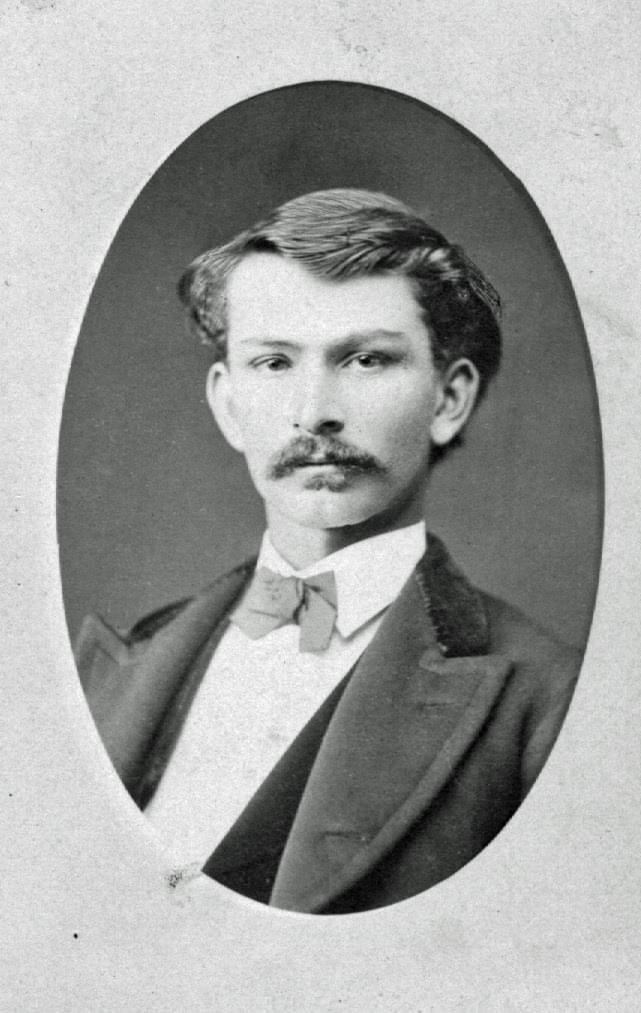From Pioneers to Philanthropists
How Butler and Perozzi left their mark for all to enjoy
In this article, learn about who Gwin Butler and Domingo Perozzi were and how their gifts 100 years ago continue to have their impact today, including other historic landmarks and places in Ashland such as SOU and the Elks Lodge.
Gwin S. Butler
Leaves a legacy for the children of Ashland-Talent
Gwin Butler was the son of pioneers Ashman J. and America E. (Rollins) Butler of Illinois and Kentucky respectively. Married in 1850, they departed two years later on a five-month journey for Yreka, California. In January, 1853, they continued on to the Rogue River Valley where Mr. Butler established a donation claim near the current city of Medford. Gwin Samuel Butler was born on January 19, 1854, likely the first Caucasian birth in Jackson County according to historian George Kramer.

Following Ashman Butler’s death in 1859, Mrs. Butler remarried pioneer, Jacob Thompson, who adopted Gwin. Gwin grew up on his father’s land claim, attended local schools and Southern Oregon Normal School. He married Alice Barron, daughter of prominent pioneer Major Hugh Barron, in 1879. He was a successful rancher and founder of a flourishing mercantile company which he later sold to devote his interests to the cattle company he owned with his step-father. He served for four years as a County Commissioner, one year as Ashland Mayor, and a number of years as a Council person, as well as being a member of the Board of Directors of local banks and companies. He was a member and officer in several fraternal organizations in the city, including the B.P.O.E. (Elks) in Ashland, where he left a gift which has helped many young people in the city.

The following is from the Elk’s Butler Memorial Fund description:
“Gwin S. Butler, a life-long Ashland resident and businessman, who died in 1947 at the age of 94, gave a number of gifts to the city: the Butler-Perozzi fountain, the Lincoln statue, the Bandshell and the children’s playground, all located in Lithia Park.
Butler, who had no children of his own, made another gift that has made a significant difference in the lives of many. He made a provision in his will for his estate to be divided equality between the Shriner’s Hospital for Crippled Children in Portland and The Gwin S. Butler Memorial Trust Fund, to be administered by Ashland Elks Lodge #944. He specified that income from the trust be used to alleviate the sufferings of mankind, with the needs of children living in the Ashland-Talent area being the first priority.”
Gwin Butler died in July of 1947 and is buried in the Mountain View Cemetery in Ashland.
Domingo Perozzi
Donated for parks and people
Domingo Perozzi was born in Switzerland on February 18, 1871. He emigrated to California with his family and grew up there. Perozzi established the Ashland Creamery in 1896, the only creamery in Jackson County. Perozzi was aware of the advantages of transporting his products on the railroad which also delivered a growing population to the area. He was soon serving both Southern Oregon and Northern California with milk, butter and other products.
The Italianate Domingo Perozzi home was built in 1902 at a time when the local economy was flourishing. The home occupied a very large property extending down the hill to Asland Creek in what is now Lithia Park. The home is listed on the National Register of Historic Places. The National Park Service website description notes, “The Perozzi’s’ influence in Ashland is linked both to the Park and to education. Before his death, Mr. Perozzi and his wife deeded three acres of his land to the city for park use. He also was instrumental in purchasing the Italian marble fountain from the 1915 Pan-American Exposition in San Francisco and donating it to the park where it is now known as the Butler-Perozzi Fountain. The Perozzi’s’ gift of 40 acres of land helped determine the site for constructing the campus of the college now known as Southern Oregon University.”



Photo by Visitor7, CC BY-SA 3.0,
